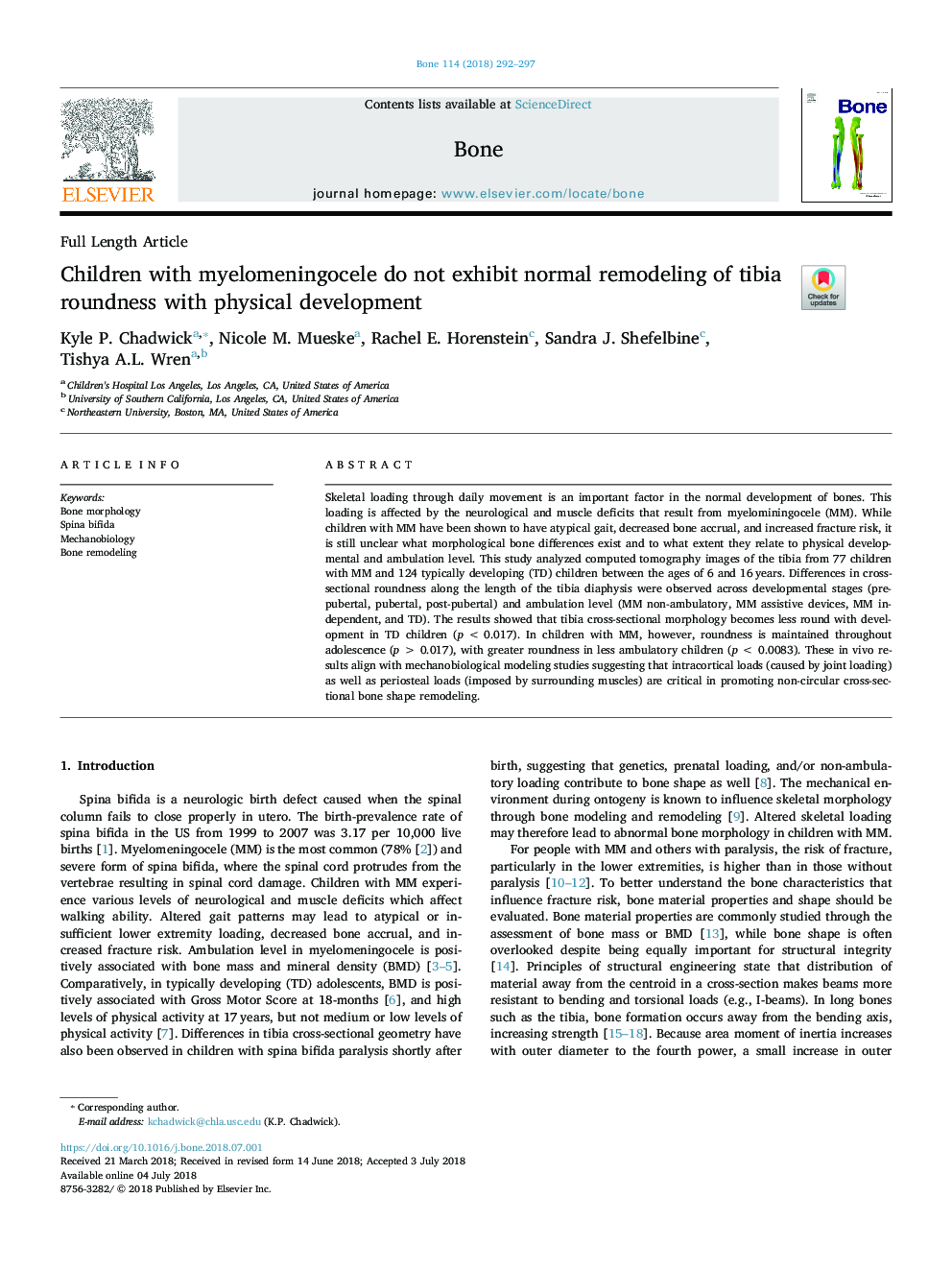| Article ID | Journal | Published Year | Pages | File Type |
|---|---|---|---|---|
| 8624818 | Bone | 2018 | 6 Pages |
Abstract
Skeletal loading through daily movement is an important factor in the normal development of bones. This loading is affected by the neurological and muscle deficits that result from myelominingocele (MM). While children with MM have been shown to have atypical gait, decreased bone accrual, and increased fracture risk, it is still unclear what morphological bone differences exist and to what extent they relate to physical developmental and ambulation level. This study analyzed computed tomography images of the tibia from 77 children with MM and 124 typically developing (TD) children between the ages of 6 and 16â¯years. Differences in cross-sectional roundness along the length of the tibia diaphysis were observed across developmental stages (pre-pubertal, pubertal, post-pubertal) and ambulation level (MM non-ambulatory, MM assistive devices, MM independent, and TD). The results showed that tibia cross-sectional morphology becomes less round with development in TD children (pâ¯<â¯0.017). In children with MM, however, roundness is maintained throughout adolescence (pâ¯>â¯0.017), with greater roundness in less ambulatory children (pâ¯<â¯0.0083). These in vivo results align with mechanobiological modeling studies suggesting that intracortical loads (caused by joint loading) as well as periosteal loads (imposed by surrounding muscles) are critical in promoting non-circular cross-sectional bone shape remodeling.
Related Topics
Life Sciences
Biochemistry, Genetics and Molecular Biology
Developmental Biology
Authors
Kyle P. Chadwick, Nicole M. Mueske, Rachel E. Horenstein, Sandra J. Shefelbine, Tishya A.L. Wren,
